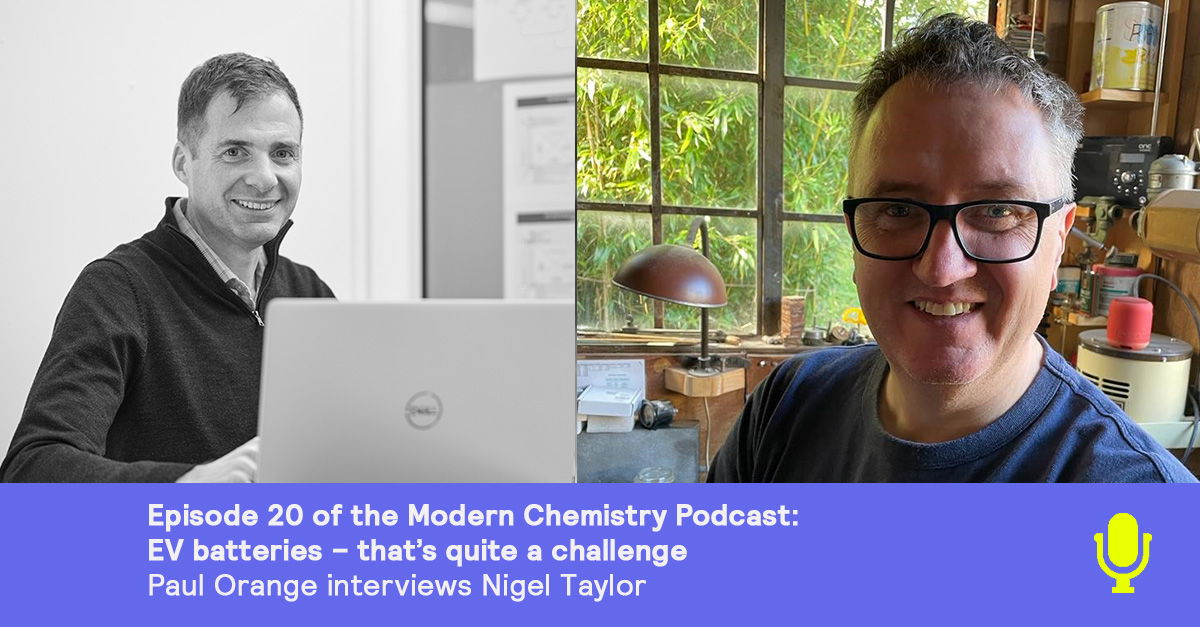
Episode 20 of the Modern Chemistry podcast features Nigel Taylor. Nigel is the founder of www.batterydesign.net – ‘Designed by battery engineers for battery engineers’. Nigel frequently posts updates and helpful information on the state of EV batteries through batterydesign.net and his related social media channels.
Our theme music is “Wholesome” by Kevin MacLeod
Music from Film Music
License: CC BY
Connect with me (Paul) on LinkedIn.
Prior to founding batterydesign.net, Nigel has gained over thirty years of experience in the automotive industry with companies such as Jaguar Land Rover, and Rover Group, more recently concentrating on low-carbon and electric vehicles.
***UPDATE TO THE CONTENT IN THE PODCAST – Nigel would like to note that the 400 kWh per kWh required to manufacture a battery is a slightly out-of-date figure. Currently, it is closer to 50-150 kWh per kWh of battery power.***
Terms used during interview
If you’re not familiar with some of the terms used in this discussion – some key ones are described here for your reference:
-
-
- C rate – the charge and discharge rates of a battery. This varies by battery, but a 1C rate will be a defined current over a particular period of time.
- Cell – The smallest form of a battery – best considered in consumer terms as a single AA or AAA, etc battery.
- Module – Several individual cells connected together. Multiple modules will be used in a pack.
- Pack – A collection of battery cells OR battery modules connected together to form the full power source for a device – for example, the pack that would be connected to a power tool.
- Thermal runaway – Due to misuse, damage, or aging, the process where a battery starts to self-heat. As the battery heats, it causes more damage, reading to greater heating, often resulting in fire, explosion, or release of gases. An internal short-circuit is often the intermediate cause of the runaway. The runaway will continue until all the chemicals causing the runaway reaction have been consumed. These are very difficult reactions to stop once they have started.
- Arcing – Current passing through a gas, which causes the electrical breakdown of that gas, often accompanied by the production of plasma and visible light.
- Series connection – connecting two or more batteries positive-to-negative. This provides a system that delivers the sum of the battery voltages without adjusting the amp hour output. For example, two 4-volt 3 amp-hour batteries in series would provide 8 volts and 3 amp hours.
- Parallel connection – connecting two or more batteries together positive-to-positive and negative-to-negative. This provides a system with increased amp-hour ratings without adjusting the current. For example, two 4-volt 3 amp-hour batteries in parallel would provide 4 volts and 6 amp hours.
- Burst disk – a single-use pressure relief system, which is a surface that bursts when a certain pressure is exceeded.
-
Nigel also mentions the Munro Tesla teardown – you can find that video here.
As well as batterydesign.net, Nigel can be found on LinkedIn.


